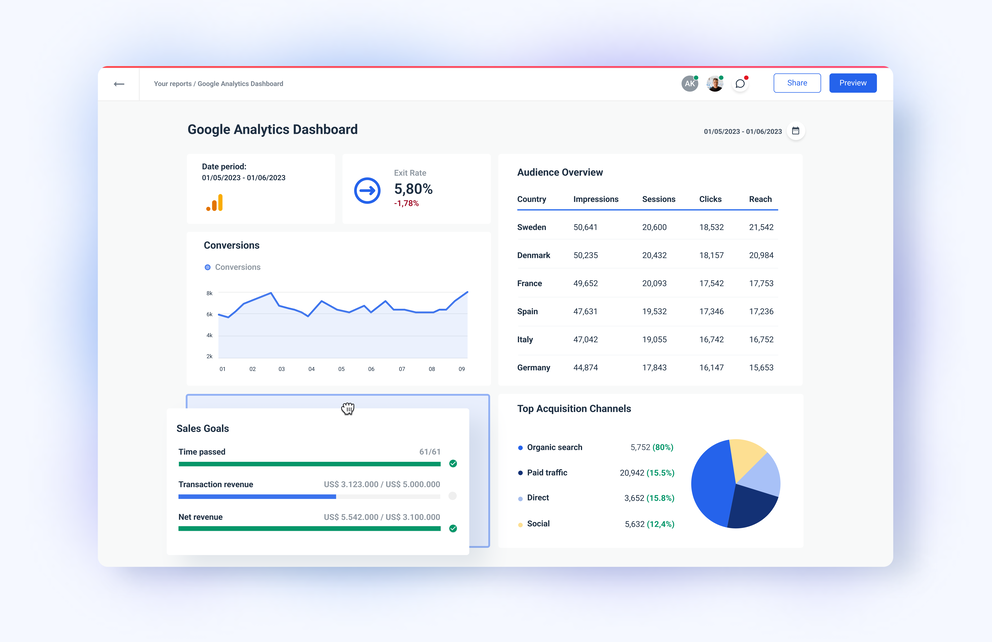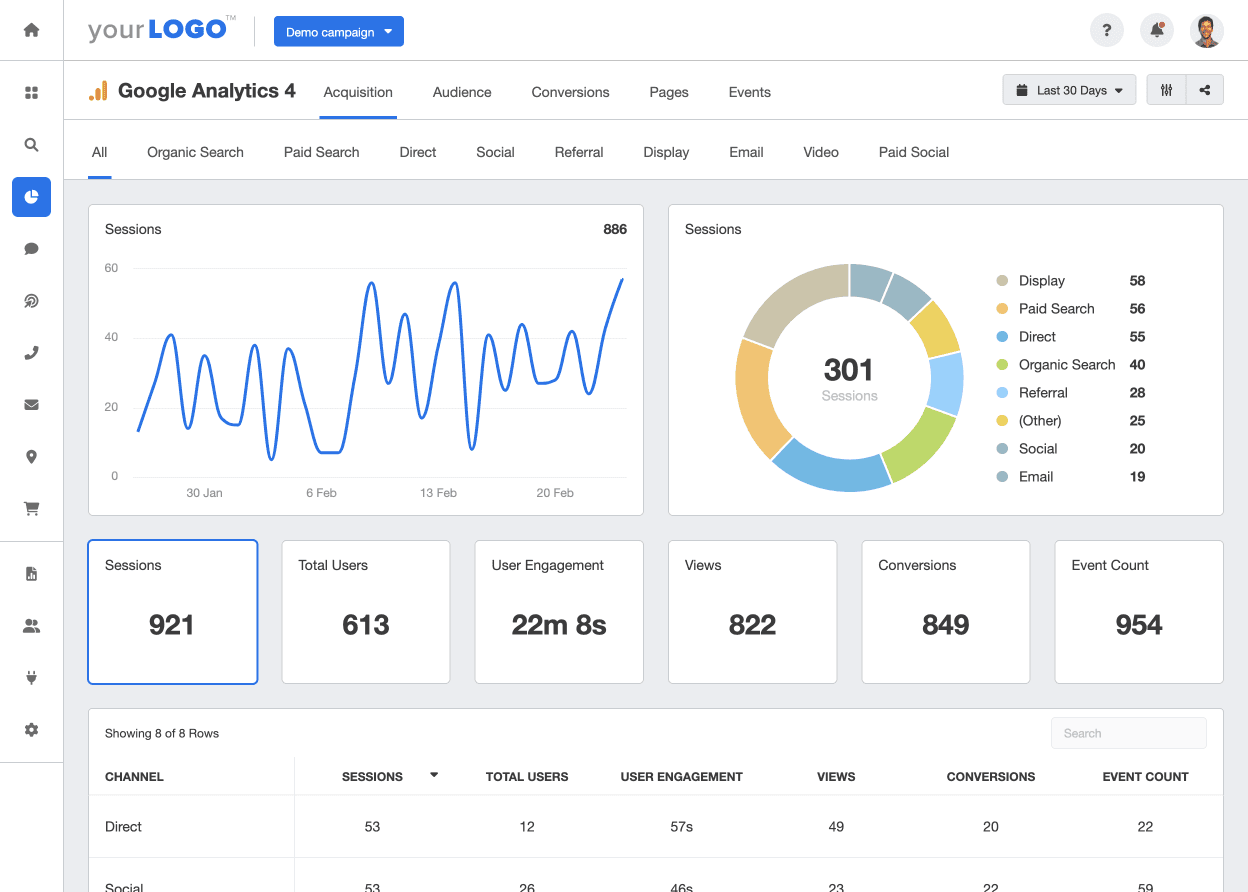Trick Factors To Consider for Marketers: When Does the Google Analytics Tracking Code Send an Event Hit to Analytics?
Trick Factors To Consider for Marketers: When Does the Google Analytics Tracking Code Send an Event Hit to Analytics?
Blog Article
Master Website Insights With Accurate Google Analytics Monitoring Code
The reliable usage of Google Analytics depends upon the exact application of its tracking code, a basic step often ignored by web site owners. This relatively simple JavaScript snippet, when correctly put, ends up being the foundation of data collection, providing insights right into user actions and website performance. Nonetheless, challenges can emerge throughout setup, possibly skewing the data and resulting in misinformed choices. Comprehending these intricacies is crucial for making the most of the benefits of analytics. What are the common challenges that could threaten your monitoring initiatives, and how can you make certain accuracy in your strategy?
Understanding Google Analytics Essentials
Google Analytics is a necessary tool for web site owners and marketing experts, giving important understandings into individual actions and web site efficiency. At its core, Google Analytics gathers information concerning visitors to an internet site, allowing users to evaluate metrics such as traffic resources, user interaction, and conversion rates. Comprehending these basics is critical for optimizing a web site's effectiveness and boosting individual experience.
The platform utilizes cookies to track communications, taping data such as web page sights, session durations, and bounce prices. This information is accumulated and presented with personalized dashboards, allowing users to envision patterns in time. Secret performance indications (KPIs) can be monitored, such as the complete variety of users, brand-new versus returning visitors, and the geographical distribution of the audience.
Moreover, Google Analytics uses segmentation functions, enabling customers to isolate certain website traffic resources or user demographics for more targeted evaluation. By understanding these foundational aspects, internet site proprietors can make enlightened decisions regarding material approach, marketing projects, and overall site enhancements. Eventually, comprehending Google Analytics basics is crucial for leveraging information to drive development and achieve company goals properly.
Establishing Your Tracking Code

Replicate the offered monitoring code and paste it right into the HTML of your website. Ideally, this code should be put in the header area of every web page you wish to track. This guarantees that the tracking code loads prior to any kind of various other material, allowing it to capture information properly. There are plugins available that streamline the integration process. if you are making use of a content administration system (CMS) like WordPress.
After installment, verify that the monitoring code is operating appropriately by utilizing Google Tag Aide or the Real-Time records in Google Analytics - when does the google analytics tracking code send an event hit to analytics?. This action is necessary to verify that your data collection is accurate and active, setting the structure for insightful analysis
Common Monitoring Code Issues
This might occur when the tracking code is positioned in find this the incorrect section of the web site's HTML, frequently leading to missing or insufficient data. In addition, having numerous circumstances of the monitoring code on a solitary web page can result in filled with air metrics, as user interactions might be counted extra than once.
Another concern arises from the usage of advertisement blockers, which can avoid the monitoring code from implementing altogether, therefore skewing data. when does the google analytics tracking code send an event hit to analytics?. Moreover, failure to set up filters appropriately can lead to the exclusion of necessary traffic sources or the inclusion of unwanted referral spam, misshaping the data collected
Site owners might additionally neglect the significance of tracking code updates, especially when moving to Google Analytics 4 (GA4) from Universal Analytics. Finally, insufficient screening before introducing modifications can result in undetected errors in the monitoring code, better complicating information dependability. Addressing these usual concerns is crucial for making certain exact monitoring and insightful analytics.
Studying Web Site Data Successfully
Accurate information collection is just the very first step in leveraging Google Analytics; the actual worth hinges on efficiently evaluating that information to drive educated decision-making. To attain this, it is vital to identify crucial performance indicators (KPIs) that align with your business goals. Concentrate on metrics such as conversion prices, individual interaction, and web traffic sources, as these will certainly provide insights right into customer actions and the general performance of your site.
Using Google Analytics' division features enables a deeper understanding of your target market. By damaging down information into specific demographics, behaviors, and traffic channels, you can discover trends and patterns that notify targeted strategies. Implementing custom-made reports and control panels can enhance this process, enabling quick accessibility to significant information.
Moreover, routinely evaluating information patterns gradually helps to identify anomalies and opportunities for enhancement. Utilize visualization devices to present data in a conveniently absorbable format, helping with much more effective communication with stakeholders. Eventually, the ability to analyze internet site data properly empowers organizations to make tactical choices that enhance customer experience, maximize advertising initiatives, and drive growth.

Ideal Practices for Accurate Tracking
Implementing effective monitoring methods is important for obtaining reliable information in Google Analytics. To ensure accurate tracking, start by appropriately mounting the Google Analytics tracking code on every page of your web site. This can be completed his explanation through a tag supervisor or by directly installing the code into the HTML.
Next, configure your Google Analytics account to exclude interior web traffic. This can be done by establishing filters that determine and get rid of sees from your organization's IP address, consequently stopping manipulated information. In addition, use occasion tracking to keep track of certain individual interactions, such as downloads or video plays, which basic web page views may go to this site overlook.
Frequently examine your tracking setup to validate that all features, such as goals and ecommerce monitoring, are operating correctly. Establish a consistent identifying convention for your events and projects to assist in easier coverage and analysis.
Last but not least, think about leveraging UTM parameters for projects to gain insights into the efficiency of different advertising efforts. By following these best techniques, you can enhance the accuracy of your data collection and analysis, eventually bring about more informed decision-making for your website.
Conclusion
By ensuring the monitoring code is appropriately put and frequently examined, web site owners can capture essential customer communication information, therefore assisting in the recognition of vital performance signs. Inevitably, a durable tracking structure enhances the ability to drive engagement and boost general web site efficiency.

Not enough screening prior to releasing modifications can result in unseen mistakes in the tracking code, additionally complicating data integrity.Carrying out efficient monitoring methods is crucial for getting trustworthy information in Google Analytics. By making certain the monitoring code is properly placed and frequently audited, web site proprietors can catch important customer communication information, thus assisting in the recognition of essential performance signs.
Report this page